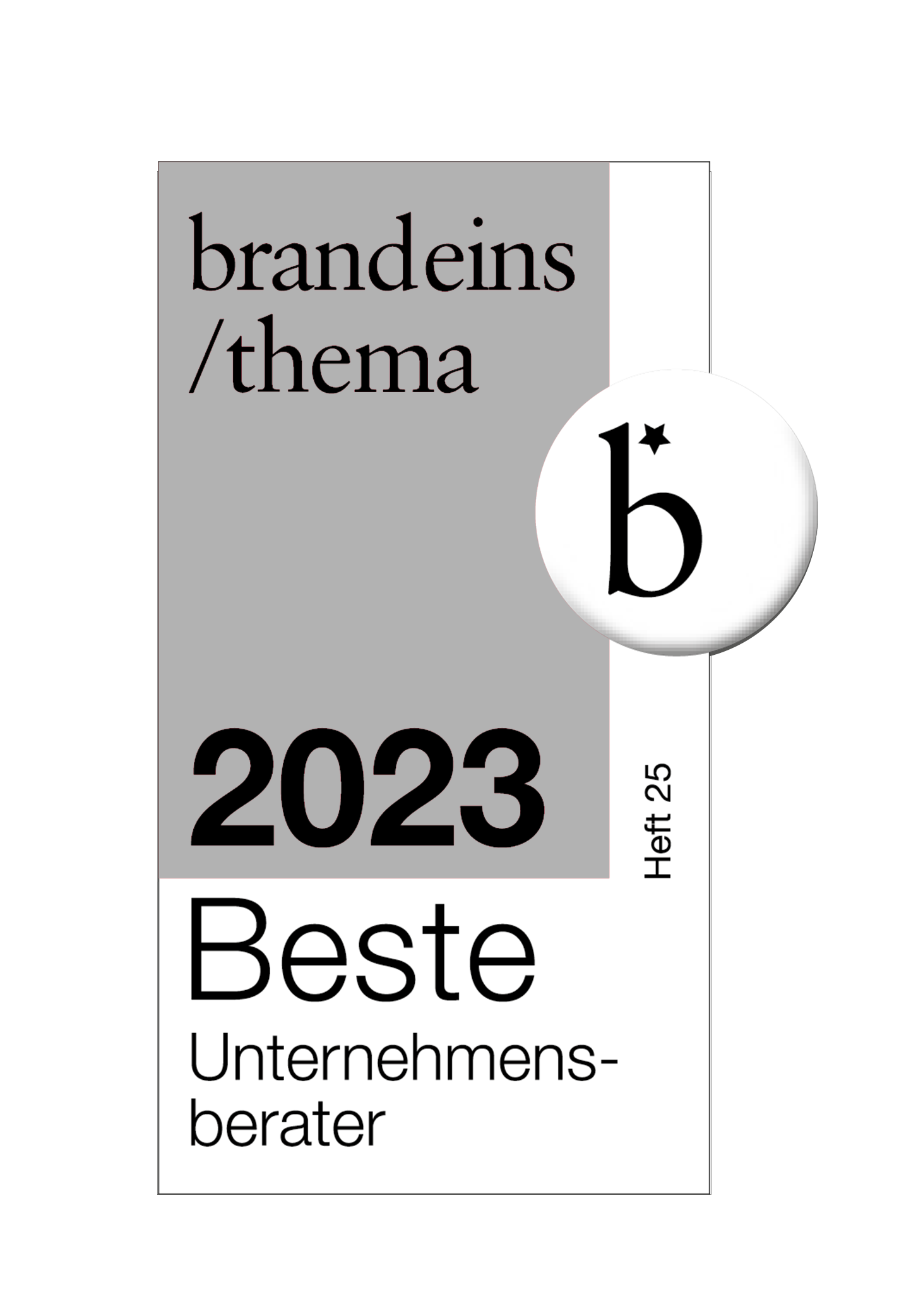What characterizes the energy ecosystems of tomorrow? How are #digitalization and new players shaping the energy market? Michael Dusch gives us answers in his new interview with msg advisors.
Mr. Dusch, the electrification of the car is being widely discussed, especially from the perspective of the automotive industry. What is the relevance of this topic in the context of the energy ecosystem?
One of the key challenges will be the regional distribution networks. Being able to recharge at public charging stations or at gas stations is important – but it is not enough to make electromobility the new standard. In the future, people want to charge their cars in their garages or on their parking spaces, at home or at work. Generally during the same timeframes. This creates the challenge of adjusting the power output, so that charging does not negatively impact network stability. That, in turn, already implies an ecosystem approach as well as working with digital technologies and the Internet of Things. Simply plugging an electric car into a power outlet is not a solution as that is just not beneficial to the network.
What exactly does that mean?
Take timing for example. Anytime other power consumption decreases, more power can be put into the charging infrastructure. On the other hand, at sites where the network is already at peak capacity, the charging capacity will have to be scaled back accordingly or power from the vehicle storage units will have to be fed back into the network. Adjusting the entire system is a challenge that, well, the entire ecosystem must address – central utilities companies of course, but power consumers and local energy producers, as well. Not only do energy suppliers have to distribute power, they also will have to influence the charging process. On the one hand, that requires highly-developed IT capacities, including the use of modern AI systems by both the supplier and consumer.
On the other hand, this requires a much closer cooperation with major energy consumers. After all, in order to keep networks stable, it is important to be able to control the production processes of more energy-intensive industries. In the past, the topic – keyword “smart metering” – was not approached properly: Setting an alarm to start the washing machine at night when electricity is cheaper – now that is a little absurd. Having production in an industrial setting sort of “breathe” with the network, now that is definitely realistic. As well as necessary, given that energy savings will always be limited, despite all the progress we are seeing.
Your answer already hints at the idea that the roles within the energy ecosystem will change going forward. How important are the decentralization of energy production and the move toward alternative energies within that context?
Major power plants that constantly produce multi-megawatts of power are no longer a current depiction of modern energy production. For three reasons: First, because we are almost at 50 percent regenerative energy, which would otherwise typically be generated locally. Second, because it is generated irregularly. There is no solar power at night and no wind power when there is no wind or during storms. And third, because the energy supply is no longer a one-way street – energy is generated and fed into the network locally. The potential imbalance between production and consumption must be solved intelligently in order to keep networks stable. This creates numerous challenges for the various actors involved.
What does this transition mean for major suppliers and network operators?
To start with, they face a challenge in connection with network topology. Many networks are decades old and not designed to support all the different forms of local energy production. One requirement the networks must comply with is ensuring the total energy input equals the total energy output to be able to maintain network stability. From that perspective, we require high-performance digital technologies that analyze and manage consumption rates, consumption flows and input flow. Yet, these curves do not always stay the same and, in a worst-case scenario, can even be inverse. Especially when it comes to local energy production, which can be irregular. In this case, you basically no longer have a constant and a variable, but two variables. Managing them so that the sum of the two variables always equals zero within the network requires highly intelligent technologies and, perspectively, also artificial intelligence.
Yet, this is certainly not a transition that network operators can manage by themselves. What role will, e.g., public utilities play in this future ecosystem?
First, networks will still have to be operated even in the future and there will be a whole range of complex, extremely cost- and resource-intensive topics to address. Leading power suppliers will have to use the benefits their scalability offers wisely and will have to set trends, such as for network migration and energy distribution infrastructures in the age of IoT. Other actors rather do not have the required size or resources.
At the same time, local energy production opens up new fields and changes the roles, also for public utilities. In the past, the question of whether to put solar panels on your roof was a matter of personal choice in the end. However, a different approach could be taken here and it actually needs to be taken, considering the greater benefit to the network.
It is conceivable for public utilities to rent roofs from homeowners in order to put communal solar panels on them. Municipalities could then assume the role of local power plant operators, offering additional services and leveraging new revenue potential in connection with their new operating model. Since they would unlikely be competing against one another and would be working in highly regulated markets, they could even work together to reach a critical mass, such as in technology development and when investing in digital platforms. Of course, that does go beyond the scope of energy and affects many communal offerings, such as the efficient management of public pools. That is why we at msg have developed a platform offering public utilities a variety of solutions to simplify the collaboration. That basically brings us to the topic of “Smart City”.
Who are the other participants in this type of smart city energy platform?
The housing sector, of course, but also major logistics service providers. It would also make sense to involve lenders, who could facilitate the corresponding transformation in residential areas and the aforementioned major industrial energy consumers, but those are just a few examples. These kinds of platforms should generally have an open design as that is a prerequisite for their sustainability and evolution.
However, one look at our electric bill and we have to wonder whether the business models and pricing policies used by power suppliers would be fair to this transition and this vision.
That is certainly not the case at the moment. Mostly, we are not paying for the exact amount of energy we consume. Instead, our meter is checked once a year and companies calculate the possible consumption for the following year. The result is divided by twelve and the result is our monthly rate. We should expect more in this age of real-time data processing. At minimum, we should pay for our exact monthly consumption – if not even daily. Another point is that pricing models would have to reflect network benefit, meaning the consumer’s contribution to network stability. As already mentioned above, that is extremely important in regard to local supply and renewable energy. And finally, when consumers choose green energy, they want to actually receive green energy – not some abstract amount created by balancing the amount of green energy fed into the overall system.
You have already mentioned the scaling advantages of major utilities company, the enormous network costs and the regulation of municipal markets. Do these frameworks protect current players against the disruptions we are currently seeing, such as in the automotive industry?
Naturally, there will be topics in the future that will be regulated or that will require the traditional assets and a lot of capital, which makes it even harder for new providers. Yet, there are definitely disruption opportunities in the energy market, especially in the field of commodities, where a differentiation by product is hardly possible. That is why not only major technology companies, but also energy comparison portals could expand their services and, instead of just allowing price comparisons and provider changes, could also act as a supply contract partner. Further, they could handle the entire contract management process for end customers in the background.
We can also imagine major energy marketers striving to establish collaborations with these kinds of portals. That could certainly change the structures in the market. Of course, decentralization would also pave the way for new players, such as the housing sector, which could assume the role of an energy supplier, since they have the capital, rooftops and resources to do so. Another direction would be network balancing. Certain providers could pop up here that develop offers for electric vehicle users, allowing to a certain extent the energy stored in the vehicle to be used as a buffer for the network.
There are many scenarios that could be developed and we will certainly be seeing new players in this market, ones we are not even aware of today or would not associate with energy supply at any rate. However, I do believe major energy suppliers will remain relevant in this system, even apart from mere infrastructure and power plant operation, but they will need to actively engage in the transformation that is already underway and think future-oriented.
In the Interview
"Simply plugging an electric car into a power outlet is just not beneficial to the network.”
"Production in an industrial setting can sort of ‘breathe’ with the network."
"Municipalities could then assume the role of local power plant operators."
“Pricing models would have to reflect the consumer’s contribution to network stability.”
“There are definitely disruption opportunities in the energy market as well, especially in the field of commodities.”
Learn more

Michael Dusch
We are looking forward to hearing from you!
Further topics
-

Decarbonization –
a profound challengeThe political will to counteract the destructive consequences of climate change is growing. But money alone is not enough. For most companies, decarbonization represents a profound, transformative challenge.
- 1
- 1
-

Minimum Viable Organization
Developing hot spots of the digital organization in a targeted manner.
- 1
What we offer
-
We are defined by our in-depth knowledge of the structures, trends and future opportunities of our core industries!
Industry-expertise
-
From the boardroom to the shop floor, we understand the challenges of the key functions!
Functional expertise
-
We create growth and efficiency drivers using smart technologies, systems and data analytics!
Data and technology
-
We develop cross-industry digital ecosystems for the business models of the future!
Ecosystems of the future
-
We develop future scenarios and design implementation-oriented transformation roadmaps!
Thought leadership
- 1





